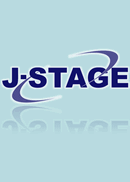36 巻, 1 号
選択された号の論文の9件中1~9を表示しています
- |<
- <
- 1
- >
- >|
巻頭言
-
2017 年36 巻1 号 p. 1
発行日: 2017/06/10
公開日: 2017/06/20
PDF形式でダウンロード (150K)
原著論文
-
2017 年36 巻1 号 p. 2-13
発行日: 2017/06/10
公開日: 2017/06/20
PDF形式でダウンロード (2308K) -
2017 年36 巻1 号 p. 14-20
発行日: 2017/06/10
公開日: 2017/06/20
PDF形式でダウンロード (577K) -
2017 年36 巻1 号 p. 21-26
発行日: 2017/06/10
公開日: 2017/06/20
PDF形式でダウンロード (547K)
研究ノート
-
2017 年36 巻1 号 p. 27-35
発行日: 2017/06/10
公開日: 2017/06/20
PDF形式でダウンロード (1015K)
寄稿論文
-
2017 年36 巻1 号 p. 36-38
発行日: 2017/06/10
公開日: 2017/06/20
PDF形式でダウンロード (1323K) -
2017 年36 巻1 号 p. 39-44
発行日: 2017/06/10
公開日: 2017/06/20
PDF形式でダウンロード (402K) -
2017 年36 巻1 号 p. 45-47
発行日: 2017/06/10
公開日: 2017/06/20
PDF形式でダウンロード (331K)
シリーズ
-
2017 年36 巻1 号 p. 48-49
発行日: 2017/06/10
公開日: 2017/06/20
PDF形式でダウンロード (281K)
- |<
- <
- 1
- >
- >|
